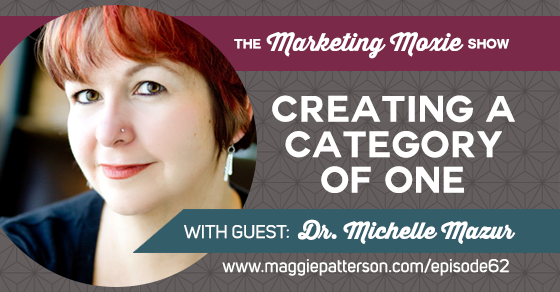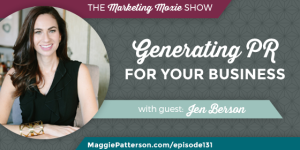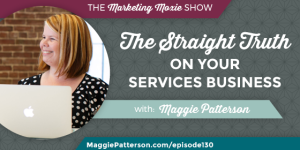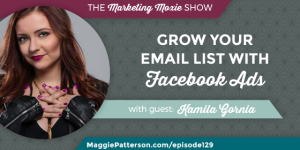
When it comes to speaking, and pretty much anything else, it’s all too easy to be forgettable. Dr. Michelle Mazur joins us today to talk about how to create a story around you and your business that’s uniquely you and positions you into a category of one.
Items Discussed in this Episode:
- Is just telling your story enough? Michelle explains why it’s not even close to enough.
- Making your story ‘audience centered’ is key to speaking.
- Michelle explains how you can use your story to create a connection with the audience, and then move on to how it can help them.
- How to find your ‘small moment’ stories and then how to think about relate that to your audience.
- Storytelling is almost like a fable, it should have a ‘moral’ or a key point to takeaway.
- Michelle explains how to position yourself in a category of one, and why it’s so important.
- What is a ‘me too’ speaker, and how can you avoid becoming one?
- If you could pass your notecards off to someone else and they could give the same speech, your content is ‘milk’.
- If you know your natural advantages, you can use that to create your presentation.
- Michelle explains how to bring the category of one concept into everything else you’re doing, not just public speaking.
- How to think about the conversation you’re participating in to position yourself as somebody different in your field.
- Once you discover your core message, Michelle describes how to keep it consistent.
[Tweet “Does your presentation pass the notecard test? @drmichellemazur talks about positioning yourself as a category of one.”]
Top 3 Takeaways for this Episode:
- Your presentation doesn’t need to be about you. The story should be something people will actually be interested in. Just writing up your story and pitching speaking engagements with it is not enough.
- Are you standing alone? Are you in a category of one? Can you pass the ‘notecard test’? There is nothing worse than a boring or vanilla speaker.
- Don’t botch the closing.The last impression of your speech is the most important thing. What do you want your audience to feel, takeaway, and act on?



